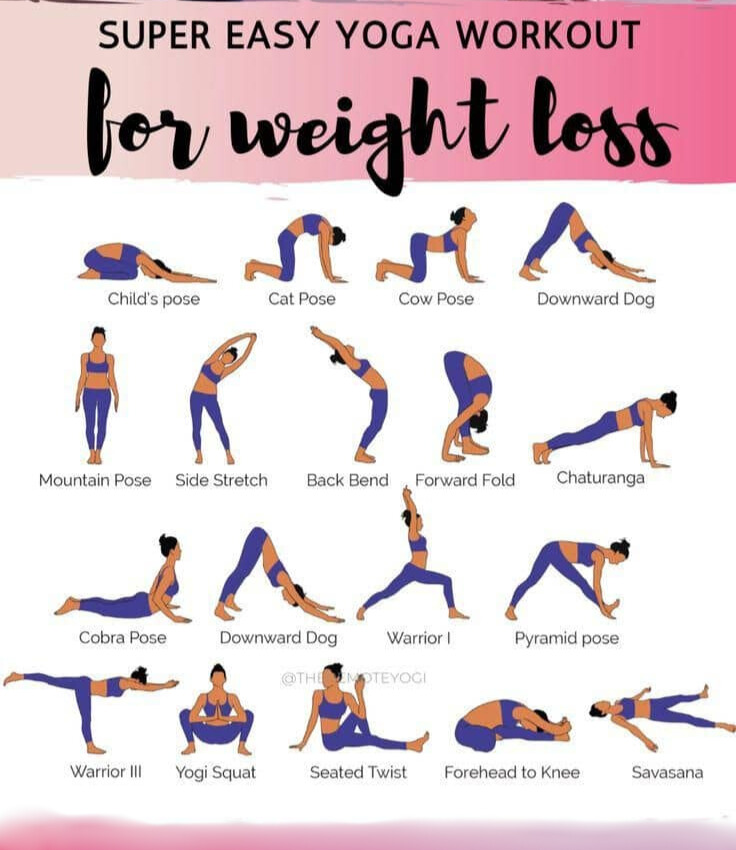The Ultimate Guide to a Super Easy Yoga Workout for Weight Loss and Relaxation
Yoga has been practiced for thousands of years, and for good reason. It offers a multitude of benefits, from improving flexibility and strength to reducing stress and promoting mental clarity. If you’re looking for a simple yet effective yoga routine that can help you lose weight and relax, you’ve come to the right place. In this comprehensive guide, we’ll walk you through a super easy yoga workout that you can do at home. Plus, we’ll provide you with downloadable PDFs for free at TheRemoteYogi.com to help you get started.
Why Choose Yoga for Weight Loss?
Before diving into the poses, let’s talk about why yoga is an excellent choice for weight loss. Unlike high-intensity workouts that can be hard on your joints, yoga offers a low-impact way to burn calories and build muscle. It also helps improve your metabolism, which is crucial for weight loss. Additionally, yoga promotes mindfulness, which can help you make better dietary choices and reduce stress-related eating.
The Super Easy Yoga Workout Routine
This yoga workout is designed to be accessible for beginners while still offering benefits for more experienced practitioners. The routine includes a variety of poses that target different muscle groups, helping you build strength, improve flexibility, and burn calories.
1. Child’s Pose (Balasana)
Start your workout with Child’s Pose to center yourself and prepare your body for the exercises ahead. This pose helps stretch your lower back and hips while promoting relaxation.
How to do it:
- Kneel on the floor with your big toes touching and knees spread apart.
- Sit back on your heels and stretch your arms forward, lowering your torso to the ground.
- Hold the pose for 1-3 minutes, breathing deeply.
2. Cat Pose (Marjaryasana) and Cow Pose (Bitilasana)
These two poses are often performed together to warm up the spine and improve flexibility.
How to do it:
- Start on your hands and knees in a tabletop position.
- For Cat Pose, exhale and round your spine towards the ceiling, tucking your chin to your chest.
- For Cow Pose, inhale and arch your back, lifting your head and tailbone towards the ceiling.
- Alternate between the two poses for 1-2 minutes.
3. Downward Dog (Adho Mukha Svanasana)
Downward Dog is a staple in yoga routines, offering a full-body stretch that strengthens the arms, shoulders, and legs.
How to do it:
- Start on your hands and knees, then lift your hips towards the ceiling, forming an inverted V shape.
- Keep your hands shoulder-width apart and your feet hip-width apart.
- Hold the pose for 1-3 minutes, focusing on your breath.
4. Mountain Pose (Tadasana) with Side Stretch
Mountain Pose is a foundational pose that improves posture and balance. Adding a side stretch helps to elongate the torso and improve flexibility.
How to do it:
- Stand tall with your feet together and arms at your sides.
- Inhale and raise your arms overhead, then exhale and lean to one side, stretching the opposite side of your body.
- Hold for 30 seconds, then switch sides.
5. Back Bend and Forward Fold
These poses help to stretch the entire back of the body, from the heels to the neck.
How to do it:
- Start in Mountain Pose, then inhale and arch your back, reaching your arms overhead.
- Exhale and fold forward, reaching for your toes.
- Repeat for 1-2 minutes.
6. Chaturanga and Cobra Pose
Chaturanga is a challenging pose that strengthens the arms, shoulders, and core. Cobra Pose follows, offering a gentle backbend to stretch the front of the body.
How to do it:
- From a plank position, lower your body until your elbows are at 90 degrees.
- Transition into Cobra Pose by lifting your chest off the ground, keeping your elbows slightly bent.
- Hold each pose for 30 seconds to 1 minute.
7. Warrior I (Virabhadrasana I) and Pyramid Pose
Warrior I is a powerful pose that strengthens the legs and opens the hips. Pyramid Pose follows, offering a deep stretch for the hamstrings.
How to do it:
- Step one foot forward into a lunge, then rotate your back foot and lift your arms overhead.
- For Pyramid Pose, step your feet hip-width apart and fold forward, reaching for your toes.
- Hold each pose for 1-2 minutes.
8. Warrior II (Virabhadrasana II) and Yogi Squat
Warrior II strengthens the legs and improves balance, while Yogi Squat opens the hips and stretches the lower back.
How to do it:
- From Warrior I, open your hips and arms to the sides, gazing over your front hand.
- For Yogi Squat, lower into a deep squat with your feet flat on the ground and elbows pressing into your knees.
- Hold each pose for 1-2 minutes.
9. Seated Twist and Forehead to Knee
These seated poses help to improve spinal flexibility and stretch the hamstrings.
How to do it:
- Sit with your legs extended, then bend one knee and place the foot outside the opposite thigh.
- Twist your torso towards the bent knee, placing the opposite elbow outside the knee.
- For Forehead to Knee, fold forward, reaching for your extended foot.
- Hold each pose for 1-2 minutes.
10. Savasana (Corpse Pose)
End your workout with Savasana to relax your body and mind.
How to do it:
- Lie flat on your back with your arms at your sides, palms facing up.
- Close your eyes and focus on your breath, allowing your body to completely relax.
- Hold the pose for 5-10 minutes.
Conclusion
This super easy yoga workout is perfect for anyone looking to lose weight, improve flexibility, and reduce stress. By incorporating these poses into your daily routine, you’ll start to see improvements in your physical and mental well-being. Remember to download your free yoga PDFs at TheRemoteYogi.com to guide you through your practice. Happy yoga-ing!










